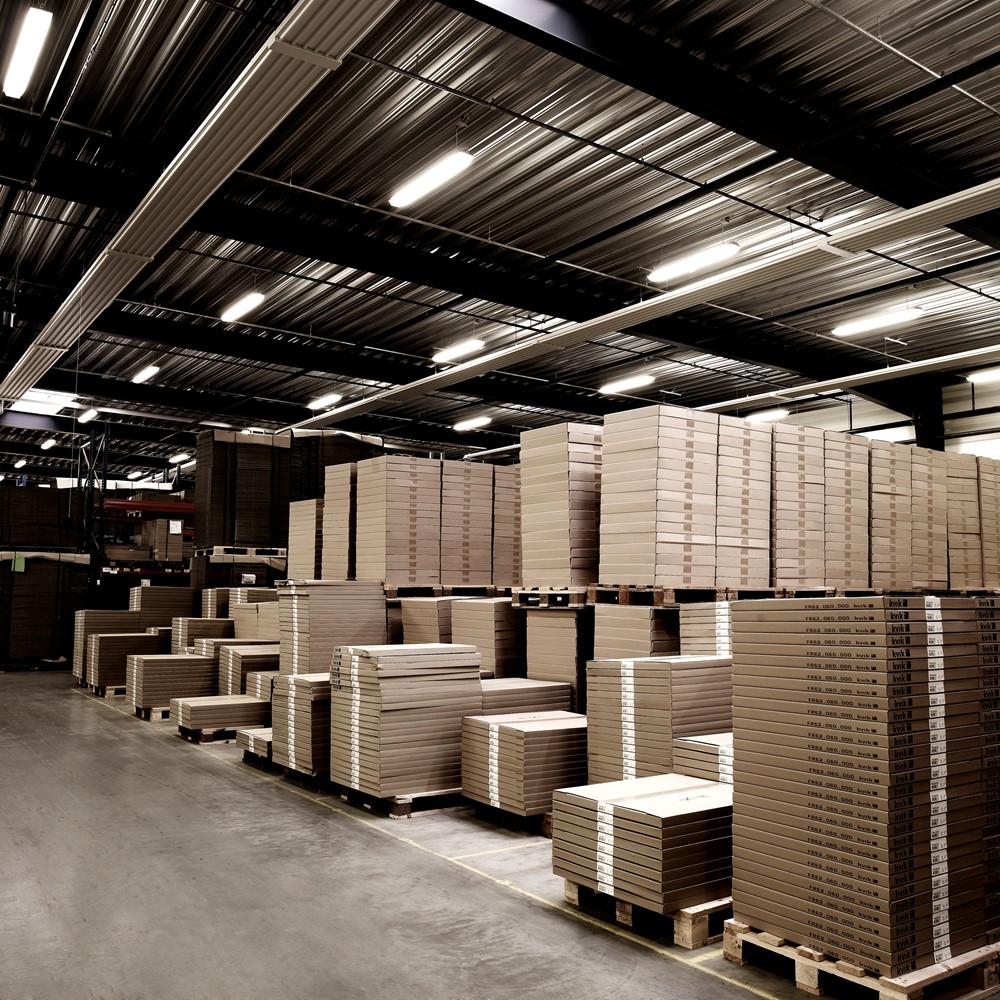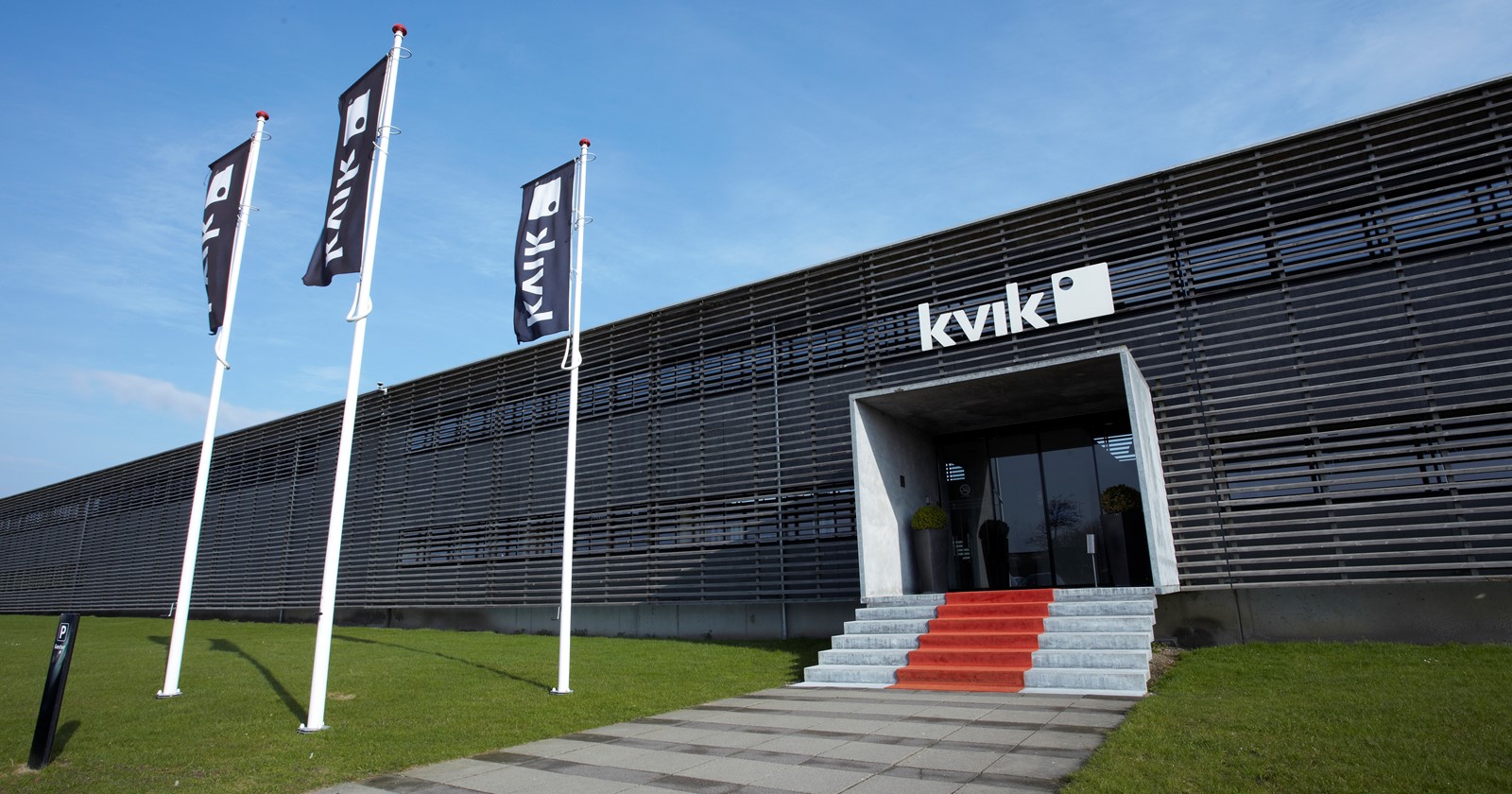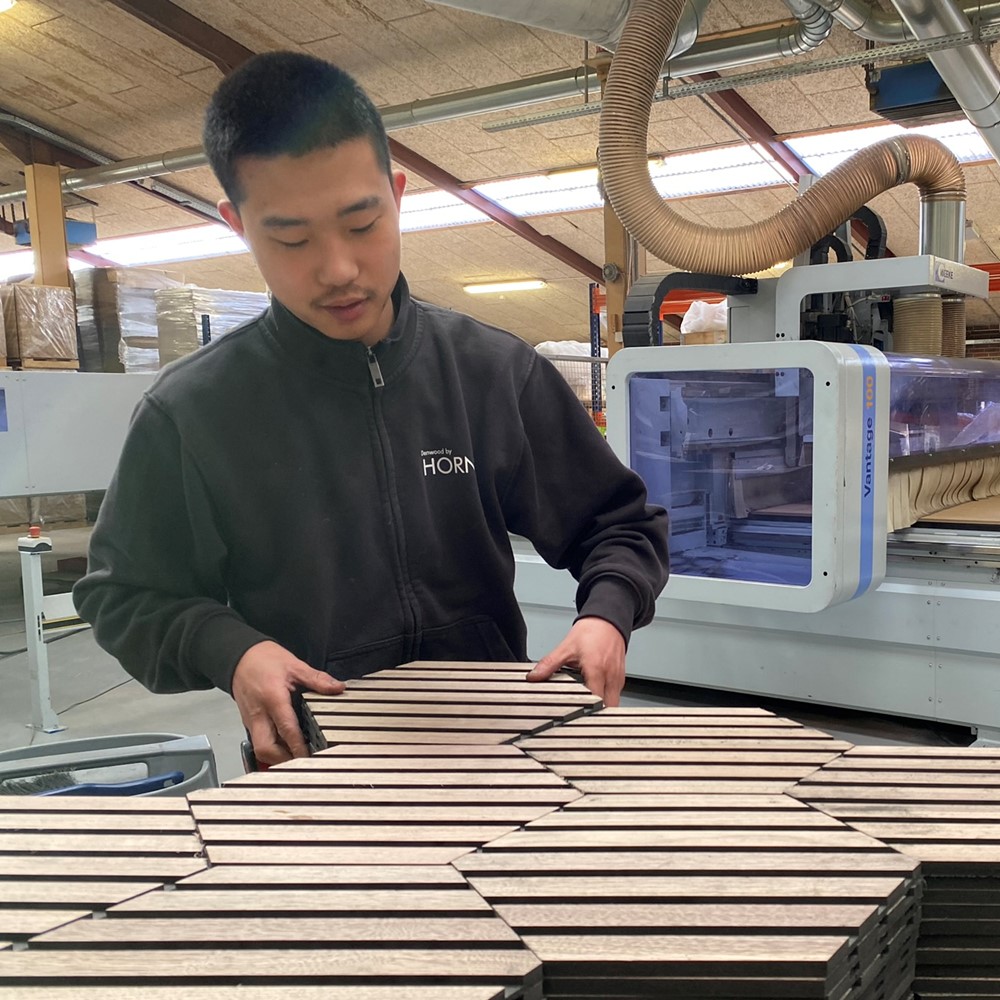A few years ago, sustainability got its own focus in Kvik’s strategy. The company could see that sustainability would grow over time. Therefore, ESG reporting is not unknown territory for the kitchen company. But it is extensive and filled with dilemmas.
At Kvik, the business strategy is continuously rolling with a five-year horizon. This allows for ongoing adjustments and fine-tuning of goals. This approach has provided a solid foundation for the new legal requirements regarding ESG reporting, says Chris Larsen, Chief Operation Officer. He was one of the first in the country to become a Business Development Engineer and has worked at Lego, Velfac, Vestas, and Velux before joining Kvik. Strong values, responsibility, and sustainable innovation have therefore well-prepared him for the tasks with ESG reporting: “Our focus is to give back more than we take. We don’t have to save the world, but we have to take our share of responsibility. Because if everyone does their part, together we can make a difference.”
Scope 3 is difficult to manage
Chris Larsen explains that the ESG task is vast. It is a broad and large field that cannot just sit in a corner waiting.
For instance, Kvik depends on transparent and valid data from its suppliers to ensure the credibility of the reporting.
“We started by focusing on energy consumption, waste, and the CO2e accounting. And we have learned along the way. Before we started the journey, we had an ambition to be CO2e positive by 2025. What we’ve learned is that scope 3 is particularly difficult. We’ve outsourced shipping, and it’s a challenge to be CO2e-positive across the board when our shipping suppliers won’t be CO2e neutral until at least 2040.”
Although Kvik utilizes flat-packed goods to maximize space, transport remains one of the largest items in the CO2e balance.
“We need to challenge the thinking of our suppliers and, together, find solutions that provide value for our entire supply chain. But it’s not without dilemmas,” Chris Larsen says, providing examples:
For instance, we’ve tried using trains for transport with some of our suppliers. However, it affects the total lead time, as the infrastructure requires transport by truck to and from the train, and one of our differentiating factors is fast delivery.
Biodiesel can be used for trucks, but in many countries, this is not widely available. This results in even longer shipping routes and a significantly higher price compared to traditional diesel – and another of our differentiating factors is that we sell Danish design at surprisingly low prices.
“We will only succeed with the overall green transition by collaborating and finding common solutions. Everyone needs to understand that we have a shared and long-term responsibility that must be solved,” Chris Larsen points out.



"Our focus is to give back more than we take. We are not here to save the world, but we must take our share of responsibility. Because if everyone does their part, together we can make a difference."
Chris Larsen, Chief Operation Officer | Kvik A/S
Win-win with Suppliers
If all companies adhered to scope 1 and 2, scope 3 wouldn’t be a problem. But that’s not the case, and therefore, Kvik must push and set requirements for its suppliers.
“We work with a code of conduct that defines what we can accept. Relevant environmental and occupational health and safety legislation must be followed. Here, we want to see the minimum requirements met, but we also want to see continuous improvement. We validate this through collaboration with EcoVadis, where our suppliers are audited,” explains Chris Larsen, adding that Kvik is willing to terminate a partnership if external auditors find that the requirements are not being met or if there is no positive development in the sustainability agenda.
But fortunately, the cooperation with suppliers is based on partnerships. One example is that kitchens are designed to last for 25 years. But after many years of white being popular, colors are now becoming more popular with consumers. This brings new challenges for Kvik – and thus for its suppliers. Popular colors don’t last as long as the classic white.
“Therefore, we focus on ensuring that our raw materials come from recycled materials, and that our design and material choices allow for recycling at the end of their lifecycle. For example, we’ve introduced foil made from recycled plastic bottles. Our door manufacturer didn’t believe in this at first, but they could feel that we were serious about it. Now, they suddenly see that they can use it in other contexts, which is why partnerships are so important. Together, we can turn challenges into shared opportunities, creating more business – both for us and for our suppliers.”
Get Started – Or the Train Will Leave Without You
Chris Larsen believes that companies shouldn’t be afraid of ESG requirements. There will always be challenges in the market, but it’s a big task.
“There’s also business to be made in working with ESG. For example, our waste has become a small revenue stream for us after we improved sorting and understanding of which waste fragments can be used in other processes. We can make this bigger, both internally – but especially in our guidance to stores and consumers,” says Chris Larsen.
However, he points out that companies must stay alert and follow what’s coming. For instance, there is a desire to eliminate the 30% largest material offenders, which could lead to new taxes that impact business. Companies need to be curious about this and start working with substitute raw materials.
“You really need to keep track of what’s happening and set the right direction for your product innovation early on by thinking life cycle assessments into the design phase,” says Chris Larsen, who has a clear message for businesses of all sizes:
“Don’t sit on your hands, because the train will leave. You simply won’t have time to implement if you start too late. The best products might suddenly become irrelevant, or you’ll be required to report without the resources if you don’t plan for data availability from the start.”
Leadership in a Sustainable Context
ESG reporting poses a series of challenges for leadership. But in essence, Chris Larsen believes it’s business as usual. It’s actions in a sustainable context, where reporting requirements need to be embraced, and continuous improvements implemented.
“It’s about prioritizing actions, and that’s generally how development works. For example, we’ve worked with data for many years: data collection, sorting, presentation, and communicating the essence. When you have a solid and robust data foundation, you can make quick and precise decisions and work on the right things,” he says, pointing out that everything around ESG comes with a very clear ‘Why’ due to the massive media coverage and focus on environmental consequences. All leaders and employees understand what’s behind it, which makes it natural for Kvik to work on this too.
He experiences that employees are engaging in the work – both in the actual tasks but also in evaluating their own processes’ impact, ensuring the organization is using its time correctly.
However, a series of dilemmas arise that leadership needs to address, such as in the work on diversity and inclusion.
“I think we’re doing well in these areas, but I see dilemmas on the horizon. For example, when you set measurements to assess how good you are in a given area, it becomes very digital, and you easily end up in ‘boxes’ – which is the opposite of the intention with diversity and inclusion,” says Chris Larsen, continuing:
“There’s no doubt that we need to promote inclusion and diversity, but we need to ensure balance so that we don’t lose Kvik’s own DNA and the healthy values we stand for.”
“The important thing is that we address what we encounter. That we know what we’re doing and are conscious of the choices we make.”
ESG Can Strengthen Business
Kvik is owned by Ballingslöv International, which has selected four UN goals and five sub-goals at the corporate level. The company is working towards 100% renewable energy, recyclability, zero CO2e, and zero accidents.
The direction is therefore clear for the entire organization.
“Many of our suppliers have already signed our code of conduct, and we know how many audits we’ve conducted with them. We know our CO2e footprint and are getting better at managing our waste. All of these are necessary efforts in the work with ESG. In several areas, there is also business in it, but you need to get a handle on this agenda. In a few years, it will be a prerequisite for doing business, and the new companies starting up – well, they’re born sustainable, so we need to get ahead of the curve,” concludes Chris Larsen.

